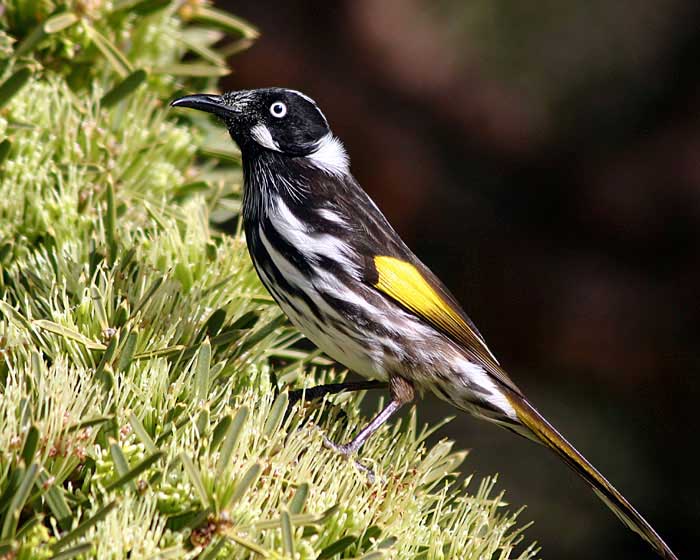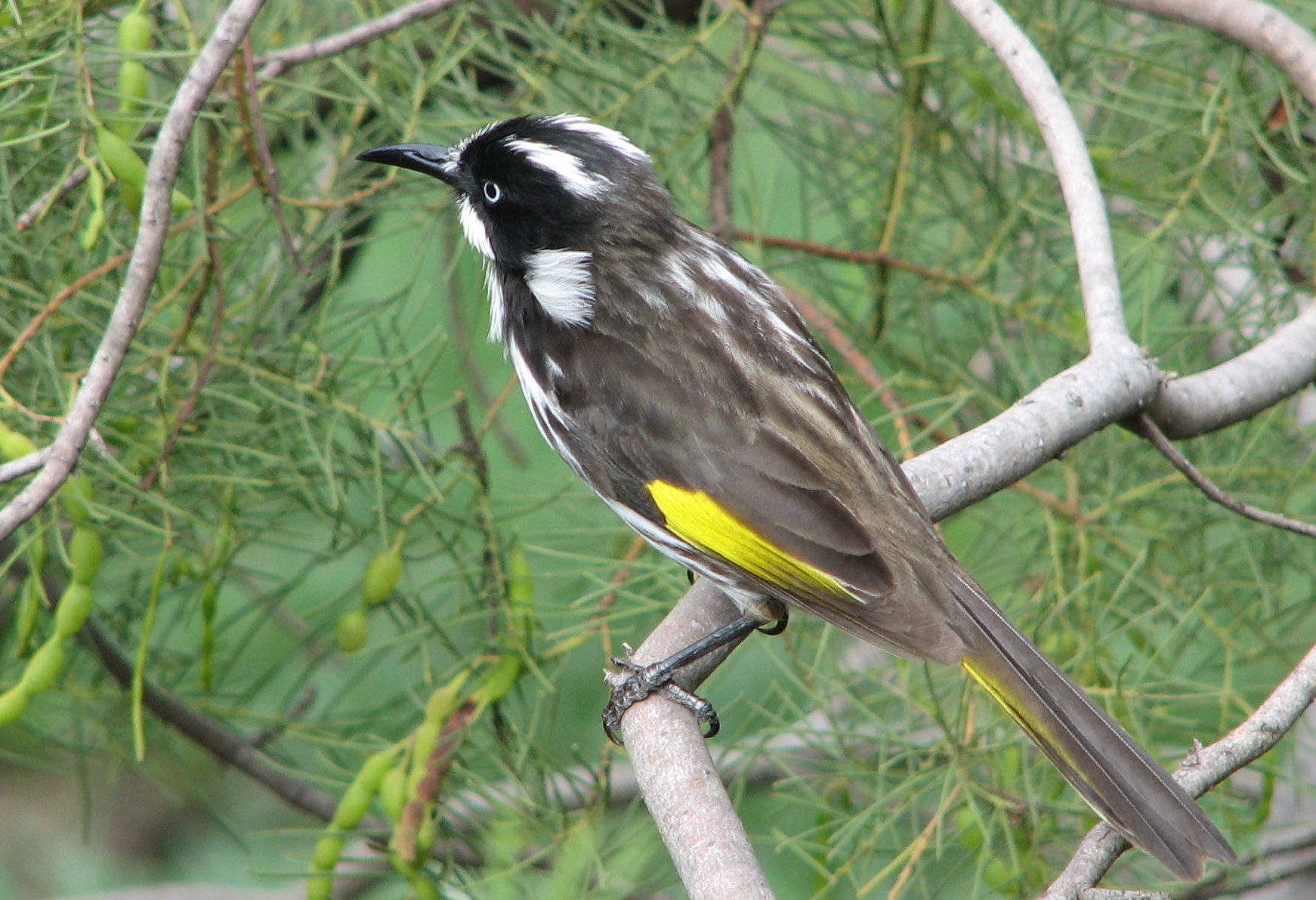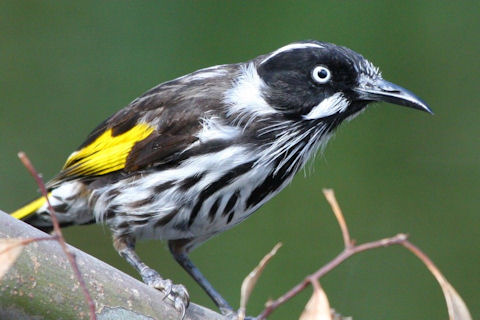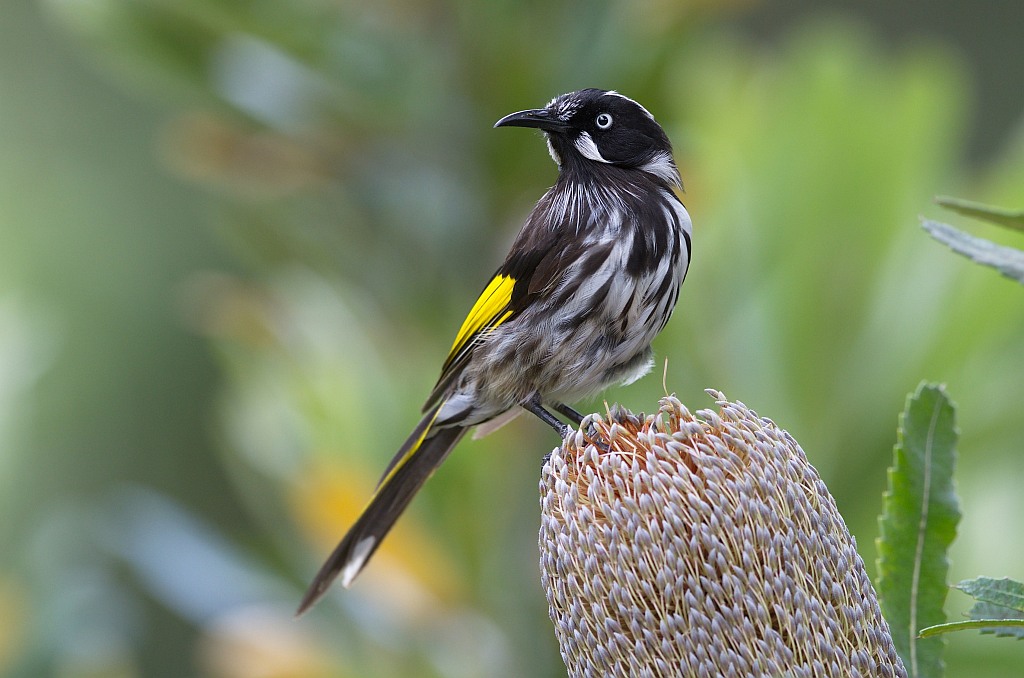
Phylidonyris novaehollandiae
TAXONOMY
Certhia novaehollandiae Latham, 1790, Port Jackson, New South
Wales, Australia. Five subspecies.
OTHER COMMON NAMES
English: Yellow-winged honeyeater, white-bearded honeyeater,
white-eyed honeyeater; French: Mйlephage de Nouvelle-Hollande;
German: Weissaugen-Honigfresser; Spanish: Pбjaro
Azъcar de Alas Amarillas.
PHYSICAL CHARACTERISTICS
6.3–7.9 in (16–20 cm); 0.7 oz (20 g). Black head and upperparts,
white spots above and below eye. Black wings have yellow at
tips. Underparts black under bill fading to white under belly.
DISTRIBUTION
Southwestern Australia and southeastern Australia north to
about Brisbane, Tasmania.
HABITAT
Open forest and woodland with dense understory, heathland,
mallee heath.
BEHAVIOR
One of the best-studied honeyeaters. They are conspicuous,
active, and aggressive. Breeding males defend areas near the
nest by perching in conspicuous locations, calling, and chasing
intruders. May perform corroborees where up to about a dozen
birds gather closely together with much calling and wing fluttering.
This may involve intraspecific interaction or be a response
to potential predators. Other displays involve spreading
the white ear-plumes, holding the bill open, and tail flicking.
Show complex but probably mostly local movements in response
to pattern of flowering. Calls mostly simple whistles,
with stronger calls during corroboree and in response to predators,
and a warbling song flight.
FEEDING ECOLOGY AND DIET
Take nectar from a wide range of native plants, including eucalyptus,
banksias, heaths, and mistletoes. May defend feeding territories.
Insects mostly taken by sallying, although sometimes taken
from foliage or bark. Also take manna, lerp, and honeydew.
REPRODUCTIVE BIOLOGY
May breed at almost any time of year but is mostly concentrated
in late winter to spring (July to September) with a secondary
peak in autumn in some years and places. Several
attempts are made per year. The cup-shaped nest is placed in a
low shrub. Clutch size is typically two, sometimes three, and
occasionally one egg. Incubation and fledging periods last
about 14 days. Parents are occasionally helped by other birds.
CONSERVATION STATUS
Not threatened; abundant in many areas.
SIGNIFICANCE TO HUMANS
A well-known honeyeater in parks and gardens in southern
Australia.
Other popular Animals
Photo Gallery of - New Holland honeyeater




 Animalia Life
Animalia Life